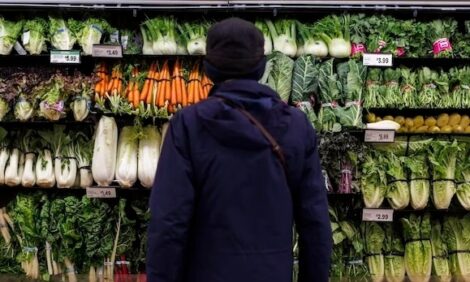



Milking the Customers - The High Cost of U.S. Dairy Policies
By Sallie James. Sallie James is a policy analyst with Cato’s Center for Trade Policy Studies. Her articles have been published in the Australian Journal of Agricultural and Resource Economics and the European Review of Agricultural Economics.
Executive Summary
The U.S. dairy program, administered through federal and state governments, subsidizes milk production and regulates dairy prices. The current system costs taxpayers more than $4 billion per year in subsidies and adds millions of dollars to the grocery bills of American consumers and to the costs of food product manufacturers.By boosting prices, the dairy program encourages overproduction. It also penalizes more efficient farmers in the futile attempt to prop up smaller dairy farmers and stem the tide of decades of changes in the dairy market.
In order to preserve domestic prices above the world prices for dairy products, the U.S. government maintains prohibitively high tariffs on imported dairy products. That invites scorn and retaliation from our trade partners and is one more agricultural program that exposes the United States to charges of hypocrisy as it seeks to paint itself as a country in favor of free markets and opportunity for all.
A better policy would be one that allows farmers to make their living, like other entrepreneurs, from markets rather than a government check. As Congress prepares to draft a new farm bill, world dairy prices are unusually strong. Thus, this is the perfect time for the government to fundamentally reform dairy policy in the United States with minimal “disruption” to dairy farmers.
Introduction
The American dairy industry operates under one of the most complicated programs in U.S. agricultural policy. Using a complex system of price supports, dairy market loss payments, federal and state marketing orders, classified pricing, and export subsidies, the government supports the dairy industry from behind a tariff wall designed to insulate U.S. dairy producers from international competition and to prevent the entire house of cards from crashing down.By keeping prices artificially high, guaranteeing income supports, and preventing import competition, U.S. dairy farmers produce dairy products regardless of market demand. That encourages overproduction, which puts further strain on the price-support system and the stocks of dairy products the government must buy to maintain it. Consumers of dairy products and food processors who use dairy products as inputs pay above-market prices, which creates welfare losses. Taxpayers must foot the bill—to the tune of more than $4 billion per year—for dairy programs that provide over 40 percent of dairy farmers’ incomes and depress world prices through exports of subsidized dairy products.
The dairy program in the United States is partly a reaction, and certainly a key contributor, to the gross distortions in world dairy markets. The global dairy trade is characterized by very high tariffs and restrictive tariff rate quotas, even after progressive liberalization from previous multilateral trade negotiations. The global market for dairy products is, consequently, “thin,” in that only 7 percent of global dairy production (measured in milk equivalent terms) is traded.1 Exports are dominated by a few main exporters, so fluctuating supplies from those countries cause volatile movements in prices.
The Doha round of trade talks among World Trade Organization members, suspended indefinitely, could have made inroads to correcting the inefficiencies in world agricultural markets, including dairy. For example, WTO members had agreed at the Hong Kong ministerial meeting in December 2005 that they would cease all export subsidies by 2013. That agreement was meaningful because dairy export subsidies, especially from the European Union, are a major contributor to global dairy market disarray. But that pledge may be abandoned unless the Doha round can be revived. Congress is due to draft a new farm bill in 2007. That presents an opportunity for policymakers to play their part in correcting the distortions in dairy markets at home and abroad. It is an opportunity that Congress can seize regardless of what, if anything, eventually happens in the Doha round. By significantly reforming the U.S. dairy program, the government could reduce the burden on taxpayers and consumers, including downstream industries in the food-processing sector. Current policy contributes to disarray in world markets for dairy prices, aggravates our trade partners, and invites retaliation from them in the form of dispute settlement action. It also contributes to the rancor over global trade liberalization and therefore is a burden to U.S. consumers and industries that would benefit from freer and more open markets in other sectors. Almost one third of the amount that the United States is allowed to spend on trade-distorting support is spent on dairy programs. The significant costs of supporting dairy farmers demand fundamental reform of the current policy.
This study will provide a background on the U.S. dairy program: how it began, its objectives, and how its various elements contribute to market distortions. The costs to consumers, taxpayers, and trade partners will be explored. The study will conclude by suggesting changes to the dairy program that would better serve America’s interests.
To continue reading this article please click here. (740Kb PDF)
November 2006


